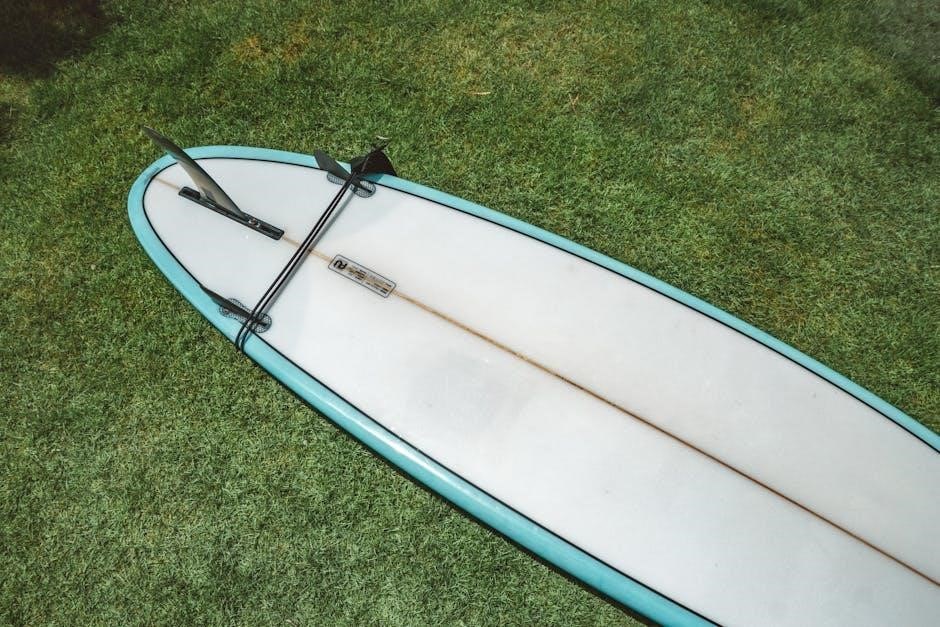Weekend Activities Worksheets are engaging tools designed to help students structure their free time while improving language skills through scheduling exercises and vocabulary practice effectively.
1.1 Overview of the Worksheet
Weekend Activities Worksheets are educational tools designed to help learners plan and organize their weekends while practicing Spanish vocabulary and grammar. These worksheets typically include scheduling exercises, vocabulary matching games, and sentence creation activities. Students are encouraged to allocate time for both leisure and chores, promoting time management skills. The worksheets often feature activities such as coloring, fill-in-the-blank exercises, and short writing prompts. They are tailored to various skill levels, making them accessible for beginners and challenging for advanced learners. This structured approach helps learners develop practical language skills while fostering productivity and creativity during their free time.
1.2 Importance of Structured Weekend Plans
Structured weekend plans play a crucial role in fostering organization and accountability, especially when combined with language learning. By allocating specific time slots for activities, learners improve their time management skills while practicing Spanish vocabulary related to daily routines. These plans also encourage a balance between leisure and responsibilities, promoting productivity and relaxation. The structured format helps learners visualize their weekends, making it easier to prioritize tasks and reflect on cultural differences in weekend habits. Such organization not only enhances language proficiency but also cultivates a sense of accomplishment and routine.
Learning Objectives of the Worksheet
Learning objectives include mastering days of the week, developing time management skills, and expanding Spanish vocabulary through interactive exercises, fostering language proficiency and organizational abilities effectively.
2.1 Understanding Days of the Week
Understanding the days of the week is a fundamental skill for students, enabling them to organize schedules and communicate effectively. The worksheet provides exercises such as matching and ordering activities to help learners identify and sequence days like lunes (Monday) through domingo (Sunday). Interactive tasks ensure students can distinguish between weekdays and weekends, fostering clarity in planning and discussing routines. This foundation is crucial for building more complex time management and scheduling skills in subsequent lessons.
2.2 Developing Time Management Skills
Time management skills are essential for organizing daily and weekend activities effectively. The worksheet includes exercises where students schedule tasks, allocate time slots for chores, and prioritize leisure activities. By practicing these exercises, learners develop the ability to balance responsibilities with free time, enhancing their organizational abilities. The activities encourage students to think critically about how to distribute their hours across the weekend, fostering a sense of accountability and structure. This skill is particularly valuable for language learners, as it helps them apply scheduling concepts while using Spanish vocabulary related to time and daily routines.
2.3 Enhancing Spanish Vocabulary
Spanish vocabulary building is a core focus of the worksheet, with activities designed to introduce and reinforce words related to weekend activities. Students engage with exercises like matching games, fill-in-the-blank tasks, and word searches, all centered on vocabulary such as days of the week, hobbies, and chores. This practical approach helps learners expand their lexicon while connecting words to real-life contexts. The exercises are structured to promote retention, allowing students to use newly learned vocabulary in sentences and scheduling activities, making language acquisition both fun and effective for all skill levels.

Worksheet Structure
The worksheet is divided into sections, including vocabulary building, sentence creation, and activity scheduling. Each part is designed to progressively enhance language skills and organizational abilities effectively.
3.1 Vocabulary Section
The vocabulary section introduces relevant Spanish words related to weekend activities, such as días de la semana and common verbs like voy a estudiar or voy a descansar. Students match these words to their English translations or images, reinforcing language retention. Fill-in-the-blank exercises encourage proper usage in context, while word searches make learning engaging. Cultural references, like traditional activities in Spanish-speaking countries, are also included to broaden understanding. This section ensures learners build a solid foundation for discussing weekends in Spanish, making it easier to create structured plans and sentences later in the worksheet.
3.2 Sentence Creation Exercises
Sentence Creation Exercises enable learners to practice forming complete sentences in Spanish using vocabulary from the worksheet. Activities include translating sentences from Spanish to English and vice versa, ensuring comprehension of grammar and structure. Students also create original sentences, fostering creativity and application of language skills. These exercises enhance the ability to communicate effectively in Spanish, focusing on clarity and accuracy. By mastering sentence formation, learners build confidence in expressing their plans and activities for the weekend, aligning with the worksheet’s goal of structured and meaningful language practice.
3.3 Scheduling Activities
Scheduling Activities involves allocating specific time slots for tasks and leisure, helping learners organize their weekends effectively. The worksheet provides structured templates to plan morning, afternoon, and evening activities, promoting time management skills. Students match vocabulary to tasks, such as chores, hobbies, or relaxation, ensuring a balanced schedule. This exercise encourages learners to prioritize tasks, set realistic timelines, and reflect on their plans. By practicing scheduling in Spanish, learners improve their ability to communicate and manage their time, making the worksheet a practical tool for language learning and real-life application.

Scheduling Weekend Activities
Scheduling weekend activities helps organize leisure and responsibilities effectively. Allocate specific time slots for tasks, ensuring a balance between fun and chores to maximize productivity and relaxation.
4.1 Morning, Afternoon, and Evening Slots
Dividing the weekend into morning, afternoon, and evening slots helps organize activities effectively. Mornings can be reserved for breakfast with family or outdoor activities, while afternoons are ideal for hobbies or chores. Evenings can focus on relaxation or personal time. This structured approach ensures a balanced mix of leisure and productivity, making the most of the weekend. By allocating specific time blocks, students can prioritize tasks and enjoy their free time without feeling overwhelmed. This method teaches time management and helps in creating a fulfilling weekend routine. It also reduces stress by providing a clear schedule to follow.
4.2 Allocating Time for Leisure and Chores
Allocating specific time slots for leisure and chores ensures a balanced weekend routine. Students can designate mornings for family breakfast or outdoor activities, afternoons for hobbies or personal interests, and evenings for relaxation or chores. This approach promotes productivity and enjoyment, allowing individuals to recharge while completing essential tasks. By separating leisure and chores, the worksheet helps users avoid overloading their schedule with too many activities. This method encourages responsible time management, ensuring that both fun and responsibilities are accounted for, leading to a more fulfilling and stress-free weekend experience.
4.3 Prioritizing Tasks
Prioritizing tasks is essential for effective weekend planning. The worksheet helps students identify and rank activities based on importance and urgency. By distinguishing between must-do tasks, such as chores or family commitments, and want-to-do activities, like hobbies or relaxation, learners can create a realistic and achievable schedule. This skill fosters decision-making and responsibility, ensuring that essential activities are completed without compromising leisure time. The worksheet encourages users to reflect on their priorities, promoting a balanced and organized approach to their weekends for overall well-being and satisfaction.

Vocabulary Building Exercises
Vocabulary building exercises help students expand their Spanish vocabulary through interactive activities like matching games, fill-in-the-blanks, and word searches, enhancing language retention and comprehension effectively.
5.1 Matching Games
Matching games are a fun and effective way to build vocabulary. Students match Spanish words related to weekend activities with their English translations or corresponding images. This activity enhances memory retention and bilingual understanding. By focusing on themes like chores, leisure, and daily routines, learners connect new words to real-life contexts. The interactive nature of these exercises keeps students engaged while reinforcing their grasp of Spanish vocabulary. Such games are particularly useful for beginners, providing a clear and structured path to language acquisition. They also serve as a quick assessment tool for teachers to gauge progress.
5.2 Fill-in-the-Blank Activities
Fill-in-the-blank exercises provide students with sentences related to weekend activities, where key vocabulary words are missing. Learners must choose the correct words from a list to complete the sentences. This activity improves comprehension and grammar skills while reinforcing vocabulary acquisition. It also helps students understand word context and sentence structure. The exercises are designed to be adaptable to different skill levels, making them accessible for all learners. These activities are both engaging and educational, offering a practical way to apply new language skills in meaningful contexts. They also serve as a useful tool for teachers to assess understanding and progress effectively.
5.3 Word Search Puzzles
Word search puzzles are a fun and interactive way for students to engage with vocabulary related to weekend activities. These puzzles feature a grid of letters containing hidden Spanish words, such as pasear (to go for a walk) or cine (movies). Students locate and circle the words, reinforcing their recognition and spelling skills. The puzzles are designed for various skill levels, with clues or word lists provided for support. They not only improve vocabulary retention but also enhance problem-solving and cognitive skills. Word searches make learning enjoyable and motivating, encouraging students to explore and practice Spanish in a playful manner. They are an excellent supplement to traditional exercises.

Sentence Creation Exercises
Sentence creation exercises help students practice forming complete sentences in Spanish using vocabulary related to weekend activities, enhancing their translation and communication skills effectively.
6.1 Spanish to English Translations
Spanish to English translations are essential for reinforcing comprehension and vocabulary retention. These exercises allow learners to convert phrases like “Voy a ir al parque” into “I am going to the park,” ensuring accuracy and fluency. By practicing such translations, students can bridge language gaps effectively. This skill is particularly useful for understanding and communicating during weekend activities. The exercises are designed to be progressively challenging, catering to different proficiency levels. Through regular practice, learners develop confidence in their translation abilities, enhancing overall language proficiency. This foundational skill supports further learning and practical application.
6.2 English to Spanish Translations
English to Spanish translations are a vital part of language learning, complementing the Spanish to English exercises; These activities involve converting sentences like “I will visit my friends” into “Voy a visitar a mis amigos,” ensuring proper grammar and vocabulary use. Worksheets often include phrases related to weekend activities, such as “I am going to the park” or “We will watch a movie.” This practice helps learners think critically and apply language rules effectively. By mastering these translations, students improve their ability to communicate fluently in Spanish, making it easier to discuss plans and routines. Regular practice enhances overall proficiency and builds confidence in using the language accurately. This skill is especially useful for describing weekend schedules and activities, bridging the gap between learning and real-life application.
6.3 Forming Complete Sentences
Forming complete sentences is a foundational skill that helps learners express their thoughts clearly. In the context of weekend activities, students are provided with vocabulary and prompts to create full sentences. For example, using words like “voy a nadar” (I am going to swim) or “nosotros jugaremos al fútbol” (we will play soccer). These exercises encourage the use of correct grammar and syntax while describing plans and routines. By practicing sentence formation, learners improve their ability to communicate effectively about their weekend schedules and activities; This skill is essential for developing fluency and confidence in Spanish, making it easier to engage in conversations about daily life and plans. Regular practice helps reinforce language rules and vocabulary retention, ensuring learners can articulate their ideas accurately and coherently.
Extra Activities for Advanced Learners
Advanced learners engage in drawing weekend scenes, writing short essays about their activities, and role-playing conversations to enhance their Spanish skills creatively.
7.1 Drawing and Coloring
Drawing and coloring activities allow advanced learners to visually represent their weekend plans, fostering creativity and vocabulary retention; Students can illustrate scenes from their favorite weekend activities, such as parks, family gatherings, or hobbies, using colors to enhance their creations. This exercise also encourages learners to associate Spanish vocabulary with visual representations, making language learning more engaging and memorable. Additionally, coloring exercises can be tailored to reinforce grammar and sentence structure through captions or labels added to their artwork. This creative approach provides a fun and interactive way to practice Spanish while expressing individuality and imagination.
7.2 Short Essay Writing
Short essay writing challenges advanced learners to express their thoughts creatively about weekend activities in Spanish. Essays encourage the use of vocabulary and grammar learned in previous sections, while fostering writing skills. Students can describe their favorite weekend routines, imaginary plans, or cultural celebrations. This activity enhances critical thinking and language application, bridging the gap between structured exercises and real-world communication. Essays also allow teachers to assess comprehension and provide constructive feedback, promoting continuous improvement. Additionally, learners gain confidence in articulating their ideas cohesively, making this a valuable tool for advanced Spanish learners.
7.3 Role-Playing Conversations
Role-playing conversations provide an interactive way for learners to practice discussing weekend plans in Spanish. This activity complements the worksheet by allowing students to engage in real-life scenarios, such as making plans with friends or describing activities. Learners can act out different roles, improving pronunciation and grammar while building confidence. Teachers can create scenarios based on worksheet content, encouraging spontaneous dialogue. This dynamic approach not only enhances fluency but also makes learning enjoyable and immersive, helping students apply their knowledge effectively. Role-playing is an excellent tool for advancing conversational skills in a natural and engaging manner.
Cultural Relevance in Activities
Cultural relevance enhances engagement by incorporating traditional weekend activities from Spanish-speaking countries, fostering cross-cultural understanding and making learning more relatable and meaningful for students globally.
8.1 Traditional Weekend Activities in Spanish-Speaking Countries
In Spanish-speaking countries, weekends often revolve around family and cultural traditions. Sundays are typically reserved for la familia, with large meals like paella or asado. Many people attend misas (church services) or participate in local festivals. Saturdays may include outdoor activities such as fútbol matches, paseos (strolls), or visits to plazas. These traditions foster a sense of community and cultural identity, making weekends a time for relaxation and connection. Incorporating these practices into worksheets helps students appreciate the cultural context of weekend routines in Spanish-speaking nations.
8.2 Incorporating Cultural Holidays and Events
Cultural holidays and events are integral to shaping weekend routines in Spanish-speaking countries. Worksheets often include activities tied to celebrations like Día de los Muertos, Navidad, or Semana Santa. These exercises help students learn vocabulary related to traditions, foods, and customs. For example, learners might match holiday-related words in Spanish to their English translations or create sentences describing how families celebrate. By integrating these cultural elements, worksheets provide a richer learning experience, allowing students to connect language skills with cultural insights and fostering appreciation for diverse traditions. This approach enhances engagement and makes learning more meaningful and memorable.
8.3 Comparing Weekend Habits Across Cultures
Comparing weekend habits across cultures fosters cultural awareness and understanding. In Spanish-speaking countries, weekends often revolve around family gatherings, traditional meals, and outdoor activities. For instance, Sundays in many Latin American countries are reserved for almuerzos familiares (family lunches). In contrast, weekends in other cultures might prioritize personal hobbies or religious practices. Worksheets encourage learners to explore these differences through activities like matching cultural practices to their descriptions or creating sentences that highlight contrasts. This comparative approach not only enhances language skills but also deepens students’ appreciation for cultural diversity and its impact on daily routines and traditions.

Tips for Teachers Using the Worksheet
Teachers can maximize worksheet effectiveness by encouraging interactive activities, providing clear instructions, and incorporating feedback to enhance learning outcomes and student engagement.
9.1 Encouraging Classroom Participation
Teachers can foster engagement by creating interactive activities that align with the worksheet, such as group discussions or role-playing. Encourage students to share their weekend plans and vocabulary in Spanish, promoting peer learning. Incorporate real-time feedback and positive reinforcement to motivate participation. Use the worksheet’s scheduling exercises to simulate real-life scenarios, making the activities relatable and fun. By integrating collaborative tasks and encouraging creativity, teachers can ensure active involvement from all students, enhancing their language skills and understanding of weekend activities effectively.
9.2 Differentiating Instruction for Various Skill Levels
To cater to diverse skill levels, teachers can modify worksheet activities. For beginners, simplify vocabulary and provide sentence templates. Intermediate learners can engage in more complex sentence creation, while advanced students can participate in role-playing or short essay writing. Offer optional challenges, such as word searches or drawing activities, to keep all students engaged. Group students by skill level for collaborative tasks, ensuring each learner feels challenged yet supported. This approach fosters inclusivity and ensures every student benefits from the worksheet’s structured yet flexible design, promoting growth at their individual pace effectively.

9.3 Providing Feedback and Assessment
Regular feedback is essential for student progress. Teachers should review completed worksheets, offering constructive comments on grammar, vocabulary, and scheduling accuracy. Highlight correct answers and gently correct errors, providing examples for improvement. Encourage students to reflect on their own learning by self-assessing their work. Consider implementing peer reviews or group discussions to foster collaboration and mutual understanding. Clear grading criteria, such as accuracy and completeness, help students understand their performance. Use these insights to adjust instruction, ensuring all learners receive the support they need to master the material effectively and confidently.

Assessment and Evaluation
Assessment involves evaluating student progress through completed worksheets, focusing on accuracy in scheduling and vocabulary use. Feedback and grading criteria ensure clear understanding of strengths and areas for improvement.
10.1 Grading Criteria for Exercises
The grading criteria focus on accuracy, completeness, and proper use of language skills. Points are awarded for correct translations, well-structured sentences, and appropriate vocabulary usage. Feedback highlights strengths and areas needing improvement, ensuring learners understand their progress. Clear rubrics guide teachers in assessing student performance fairly, while encouraging self-assessment and peer review. This structured approach helps learners track their development and stay motivated to improve their Spanish language proficiency through consistent practice and review of weekend activity schedules and related exercises.
10.2 Monitoring Progress in Vocabulary and Sentence Formation
Regularly reviewing completed worksheets allows teachers to track improvements in vocabulary retention and sentence structure. Students demonstrate understanding by correctly matching words, filling in blanks, and forming coherent sentences. Progress is evident as learners use vocabulary in context and create grammatically correct sentences. Teachers can identify common errors and provide targeted feedback, while students can reflect on their own improvement over time. This ongoing assessment helps refine language skills and builds confidence in using Spanish effectively for describing weekend activities and beyond.
10.3 Student Self-Assessment
Student self-assessment encourages learners to evaluate their own progress in completing weekend activities worksheets. By reviewing their answers, students identify strengths and areas for improvement. This reflective process helps them take ownership of their learning, fostering independence and self-awareness. Self-assessment also allows students to set personal goals, such as mastering specific vocabulary or improving sentence accuracy. Worksheets often include spaces for learners to rate their confidence and reflect on challenges faced. This practice not only enhances accountability but also builds a growth mindset, empowering students to track their own development effectively over time.
Weekend Activities Worksheets effectively enhance learning by combining fun with structured planning. They foster language skills, time management, and cultural awareness, encouraging consistent practice for lasting improvement.
11.1 Summary of Key Takeaways
The fin de semana actividades worksheet pdf focuses on enhancing Spanish language skills through engaging weekend planning exercises. It emphasizes vocabulary building, sentence creation, and time management while incorporating cultural insights. The worksheet offers a structured approach for learners to practice scheduling activities, creating sentences in Spanish, and understanding cultural traditions. Additionally, it provides tools for teachers to assess progress and differentiate instruction. By combining practical tasks with language practice, the worksheet ensures a comprehensive learning experience that fosters both linguistic and organizational abilities, making it a valuable resource for Spanish learners of all levels. Its versatility supports both classroom and independent learning environments effectively.
11.2 Encouraging Continued Practice
Consistent practice is essential for mastering Spanish and effective time management. Encourage learners to use the fin de semana actividades worksheet pdf regularly, exploring new vocabulary and scheduling techniques each week. Motivate them to apply their skills beyond the worksheet by planning real weekend activities and sharing their schedules with peers or teachers. This fosters accountability and creativity. Additionally, learners can teach others what they’ve learned, reinforcing their own understanding. Regular practice, even in small doses, helps retain language skills and improves organizational habits, ensuring long-term progress and confidence in both Spanish proficiency and structured planning abilities over time.
11.3 Final Thoughts on the Importance of Structured Activities

Structured activities play a vital role in fostering both language proficiency and life skills. The fin de semana actividades worksheet pdf offers a comprehensive approach to learning Spanish while encouraging organization and time management. By engaging with these exercises, learners develop a clear understanding of how to balance leisure and responsibilities, enhancing their ability to plan effectively. This structure not only improves linguistic competence but also cultivates essential life habits. Emphasizing the importance of structured activities ensures learners remain motivated, disciplined, and prepared to handle various aspects of their lives with confidence and clarity, both now and in the future.

Additional Resources
Explore fin de semana actividades worksheet pdf and discover recommended worksheets, online tools, and reading materials to enhance Spanish learning and weekend planning skills effectively.
12.1 Recommended Worksheets and Activities
For effective learning, explore fin de semana actividades worksheet pdf, offering a variety of scheduling exercises, vocabulary lists, and interactive tasks. These resources include matching games, fill-in-the-blank activities, and word searches to practice Spanish vocabulary related to weekends. Additionally, worksheets feature sentence creation exercises, translations, and scheduling templates to help plan and organize activities. Many PDFs are designed for different skill levels, ensuring suitability for both beginners and advanced learners. Interactive activities like crossword puzzles and role-playing exercises further enhance engagement. Teachers can find these resources on platforms like Teachers Pay Teachers or educational blogs, providing a comprehensive toolkit for structured weekend planning and language practice.
12;2 Online Tools for Learning Spanish
Enhance your Spanish learning journey with online tools like Duolingo, Babbel, and Quizlet, offering interactive lessons and exercises. Platforms like SpanishDict provide verb conjugations and grammar guides, while YouTube channels such as SpanishPod101 and Butterfly Spanish offer engaging video tutorials. For practice, use italki to connect with native speakers or Memrise for vocabulary building. These resources complement fin de semana actividades worksheet pdf by providing additional practice opportunities, ensuring a well-rounded learning experience tailored to your needs and skill level.
12.3 Suggested Reading Materials
Complement your learning with reading materials such as bilingual books like Today is Monday by Eric Carle, which introduces days of the week in Spanish. Textbooks like Spanish for Beginners and Practice Makes Perfect provide comprehensive grammar and vocabulary lessons. For younger learners, Los Días de la Semana and La Rutina Diaria are engaging and educational. These resources, along with fin de semana actividades worksheet pdf, offer a diverse and immersive learning experience, helping students connect language skills with real-life scenarios and cultural contexts effectively.
